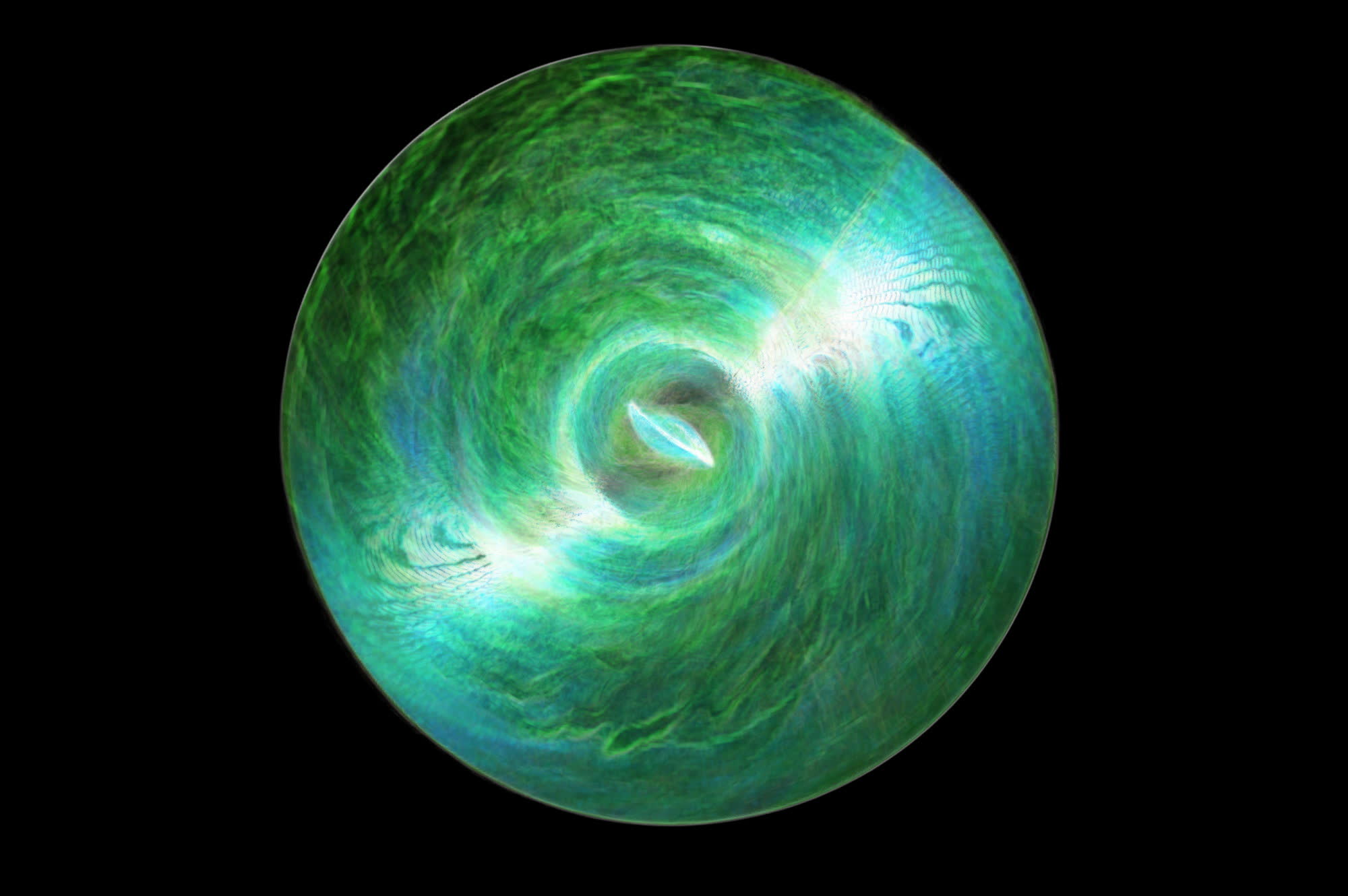In context: Supermassive black holes are among the most extreme phenomena that humans have discovered in outer space. They possess a mass hundreds of thousands, or even millions to billions of times the mass of the Sun, and they are responsible for powering unprecedented luminous events known as quasars.
Researchers at Northwestern University utilized the Summit supercomputer to conduct a "3D general relativistic magnetohydrodynamics" simulation of a thin, tilted accretion disk rotating around a supermassive black hole. Thanks to the powerful HPC system located at Oak Ridge National Laboratory, the scientists were able to simulate a more realistic black hole than ever before, uncovering new phenomena in the process.
Conventional theory regarding supermassive black holes suggests that they are celestial entities that gradually consume gas and dust over timeframes measured in hundreds, or even hundreds of thousands of years, as stated by the researchers. However, according to the new simulation, this consumption process can seemingly occur in just a matter of months, coincidentally aligning with the timeframe required for active quasar emissions.
The 3D simulation crafted by the scientists at Northwestern University elucidated that a spinning black hole distorts the surrounding space-time region. This phenomenon will eventually tear apart the tumultuous vortex of gas and dust that surrounds the black hole, referred to as the accretion disk. The ultimate outcome of this space-time distortion process is the segmentation of the accretion disk into inner and outer sub-disks, subsequently fueling the ultra-fast feeding behavior described in the new research.
The singularity at the center of the black hole initially consumes the inner ring, according to the researchers. Subsequently, debris from the outer disks spills inward to fill the gap left by the now-consumed inner ring, enabling the eating process to repeat. A single cycle of this endlessly repeating eat-refill-eat process takes only a few months, the scientists state. This timescale is incredibly rapid compared to previous theoretical predictions.
This new simulation could shed light on the behavior of some of the brightest objects observed in the universe, such as quasars. These quasi-stellar objects can become as luminous as the combined light of every star within their host galaxy, only to disappear "without explanation" after a few months. Nick Kaaz, who led Northwestern's study, points out that classical accretion disk theory predicts a very slow evolution of the disk surrounding a black hole.
However, some quasars, Kaaz explains, undergo a more dramatic change in luminosity over the course of months or years. The rapid fluctuations in brightness observed in quasars align with the multi-layer disks and their complex physical interactions observed through the new black hole simulation.
